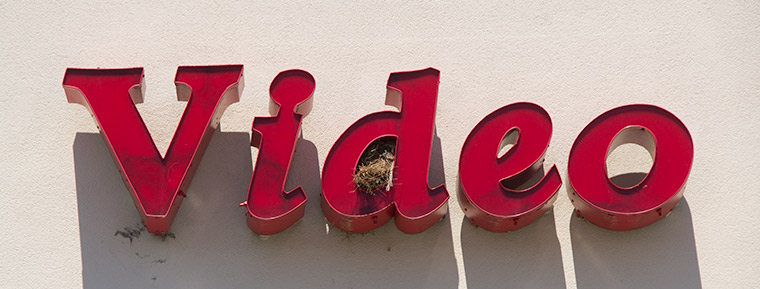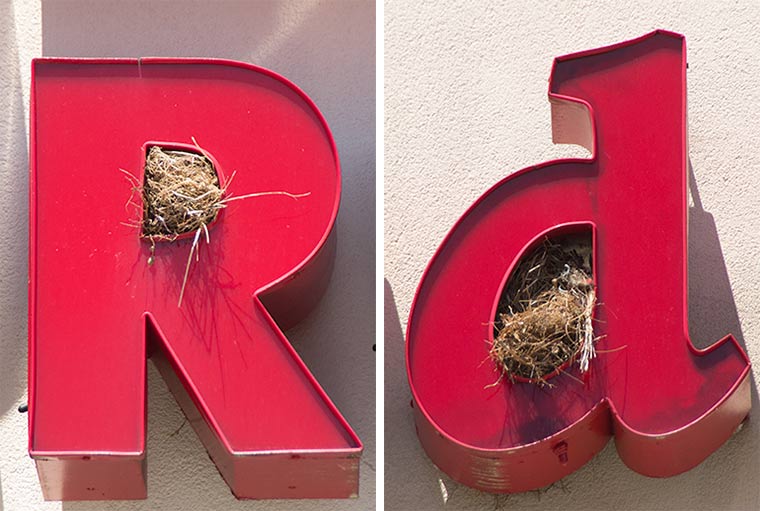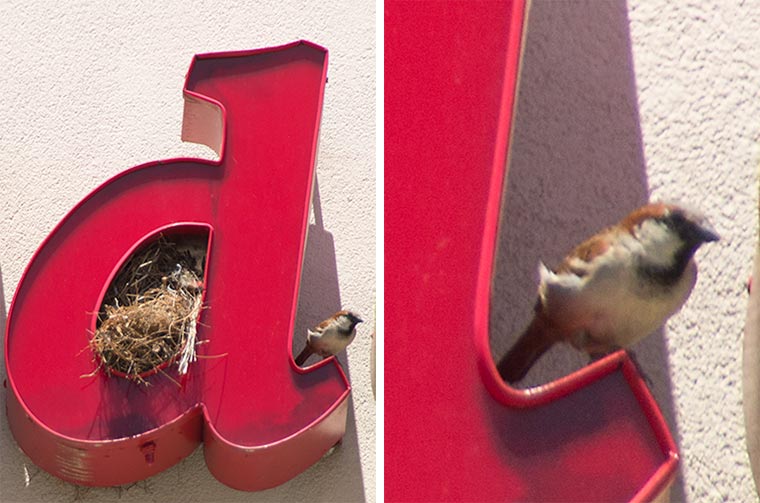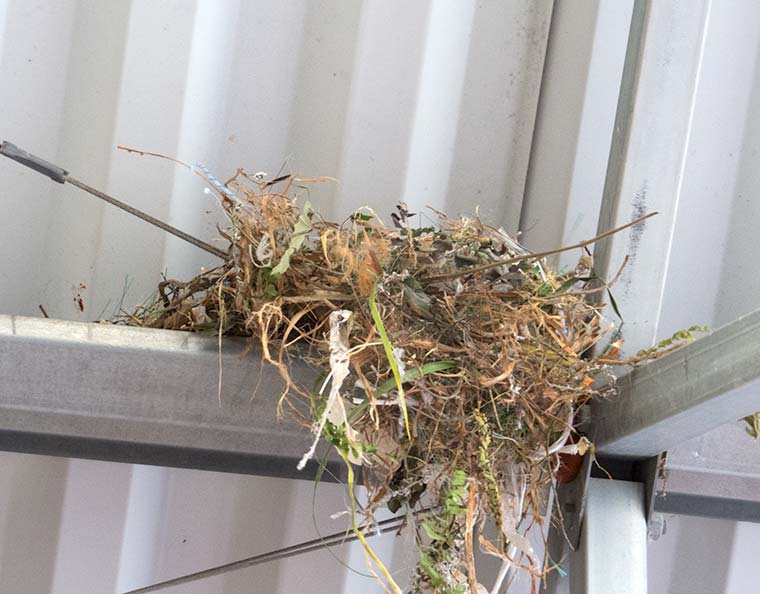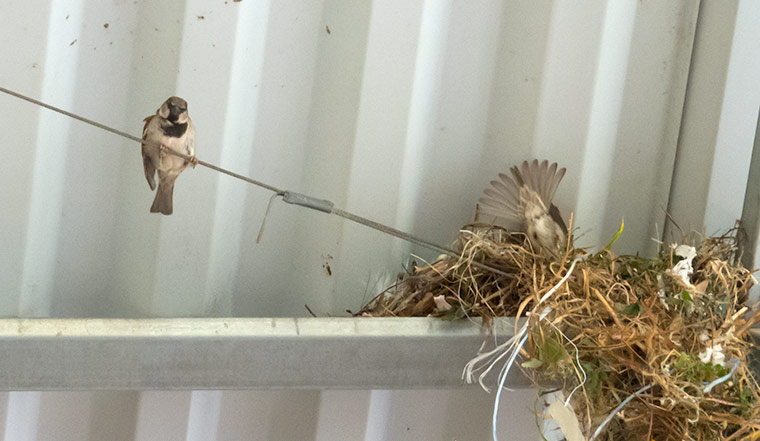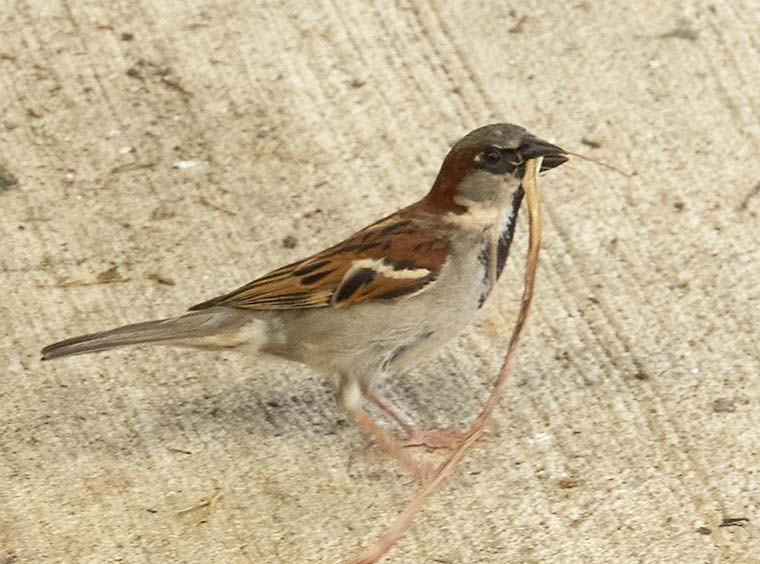We stopped at a supermarket the other day, and I noticed that the signs were a bit strange. It looked as if someone (or something) was trying to stuff some of the letters with straw and plant debris. Have a look at the “R” in “Drive-Thru” and the “d” in”Video” in the photographs above.
Here is a closer look at the two stuffed letters.
The culprit reveals himself! It is a House Sparrow (Passer domesticus). When we were growing up in Indiana we always called these birds “English” sparrows. My cousins, who lived about 50 miles north of us, called them “spatzies” (from the German “Spatz” for “sparrow”). This species is not a native bird in the U.S. Most authorities believe House Sparrows originated in the Middle East and spread through Europe and Asia with the spread of agriculture. They are most common around human settlements, and are seldom found in truly wild areas.
And who built this handsome, if somewhat chaotic, nest under the roof of our local Walmart Garden Center?
It is a pair of House Sparrows! The male seemingly sits idly by at the left while the female is working assiduously on the nest. I noticed that when she pulled very hard on a piece of string or other nest material, her tail fanned out.
The male does after all help with the nest. Here he is on the floor at Walmart gathering some string for the nest. He is quite a handsome little guy with his black bib and his chestnut back feathers.
House Sparrows were first introduced to the U.S. in 1851, when directors of the Brooklyn Museum released 8 pairs. Two years later many more were introduced, and they have done exceedingly well. They were found coast to coast by 1875. Introductions, by accident or intention, to many areas worldwide have made this species the world’s most widely distributed wild bird. And it is still spreading. It reached Iceland only in 1990, for example.
House Sparrows are widely regarded as pests, because they build their nests in places where people do not want them to, as shown in this post. They also compete with native birds for space in bird houses. Those who put up houses for Eastern Bluebirds or Purple Martins, for example, often find House Sparrows taking up residence.
Discover more from A Naturalist's Journal
Subscribe to get the latest posts to your email.


